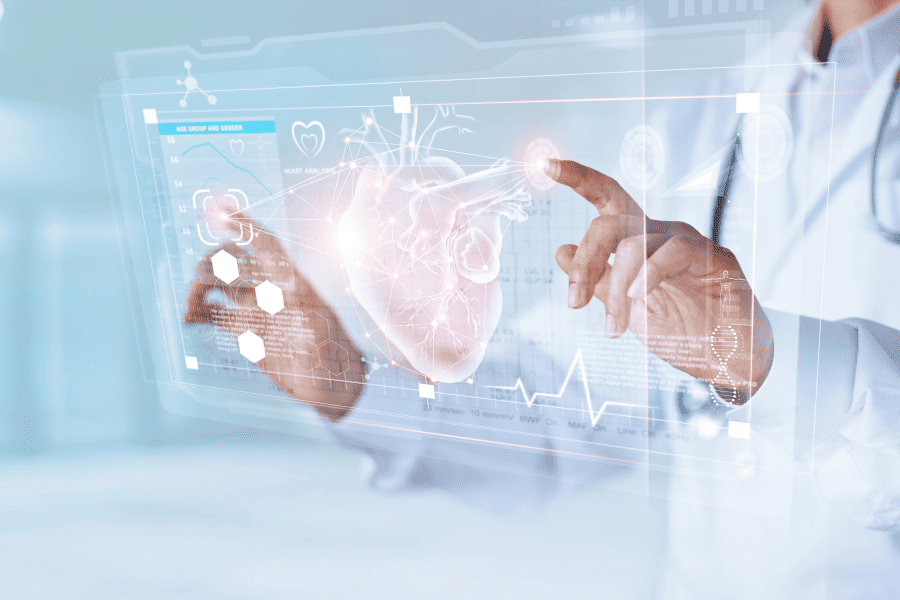A venous aneurysm is an abnormal bulging or dilation of a vein, caused by weakening of the vessel wall. Unlike arterial aneurysms, which occur in arteries and can be life-threatening, venous aneurysms are generally less dangerous. However, they can still cause discomfort and complications if left untreated.
Symptoms
Venous aneurysms may not always present symptoms. When they do, the symptoms can vary depending on the location of the aneurysm. Common symptoms include:
- Visible swelling or lump under the skin
- Pain or discomfort at the site of the aneurysm
- Varicose veins or venous insufficiency symptoms, such as leg swelling, heaviness, or skin changes, if the aneurysm occurs in the legs
In rare cases, a venous aneurysm can lead to complications like blood clot formation or rupture, which may cause more severe symptoms.
Causes
Venous aneurysms can develop due to various factors that weaken the vein walls. These factors include:
- Congenital abnormalities: Some people are born with weaker vein walls, predisposing them to venous aneurysms.
- Inflammation: Chronic inflammation in the vein walls, as seen in conditions like vasculitis, can lead to aneurysm formation.
- Trauma: Injuries to the veins, such as those from surgeries or accidents, can cause venous aneurysms.
- Deep vein thrombosis: A history of blood clots in the veins can increase the risk of venous aneurysms.
Risk Factors
Certain factors may increase the risk of developing venous aneurysms, including:
- Family history of venous disorders
- History of deep vein thrombosis or blood clots
- Conditions that cause chronic inflammation, such as autoimmune disorders
- Prior surgeries or procedures involving the veins
Prevention
Preventing venous aneurysms involves managing risk factors and promoting overall vein health. Some preventive measures include:
- Regular exercise: Physical activity helps improve blood circulation, reducing the risk of venous disorders.
- Maintaining a healthy weight: Excess weight puts pressure on the veins, increasing the risk of venous problems.
- Wearing compression stockings: These can help improve blood flow, especially in people with a history of venous disorders or blood clots.
- Avoiding prolonged sitting or standing: Regularly changing positions can help prevent blood pooling in the veins.
When to See a Doctor
If you notice symptoms of a venous aneurysm, such as a visible lump or swelling, pain, or skin changes, it’s essential to seek medical attention. Additionally, if you have risk factors for venous aneurysms, regular check-ups can help monitor your vein health.
Diagnosis of Venous Aneurysms
The diagnosis of venous aneurysms typically begins with a physical examination, during which the doctor will assess any visible bulges or lumps and ask about your symptoms and medical history. To confirm the diagnosis and evaluate the size, location, and possible complications of the aneurysm, your doctor may order imaging tests, including:
- Duplex ultrasound: This non-invasive test uses sound waves to create images of the veins and assess blood flow, helping to identify venous aneurysms and any associated blood clots.
- Magnetic Resonance Imaging (MRI) or Computed Tomography (CT) scans: These imaging tests provide detailed images of the veins and surrounding tissues, helping to assess the size and extent of the aneurysm.
Treatment Options for Venous Aneurysms
Treatment for venous aneurysms depends on factors such as the size and location of the aneurysm, your symptoms, and any associated complications. Treatment options may include:
- Observation: If the aneurysm is small and not causing any symptoms or complications, your doctor may recommend regular monitoring with periodic imaging tests to ensure it doesn’t grow or cause problems.
- Compression therapy: For aneurysms in the legs, wearing compression stockings can help improve blood flow and reduce symptoms like swelling and pain.
- Sclerotherapy: This minimally invasive procedure involves injecting a solution into the aneurysm to shrink and close it. It’s commonly used for smaller venous aneurysms.
- Surgery: Larger aneurysms or those causing symptoms or complications may require surgical removal or repair. The type of surgery depends on the location and size of the aneurysm.
Complications of Venous Aneurysms
Venous aneurysms can sometimes lead to complications, including:
- Thrombophlebitis: Inflammation of the vein wall, often accompanied by blood clot formation.
- Deep vein thrombosis (DVT): A blood clot in a deeper vein, typically in the legs, which can cause pain and swelling and may lead to serious complications.
- Pulmonary embolism: A potentially life-threatening condition that occurs when a blood clot dislodges and travels to the lungs, blocking blood flow.
- Venous insufficiency: A condition where the veins struggle to efficiently return blood to the heart, leading to symptoms like swelling, pain, and skin changes.
- Rupture: Although rare, a venous aneurysm can rupture, causing bleeding and pain.
In conclusion, Venous aneurysms are abnormal bulges in the veins that can cause discomfort and complications. Understanding their causes, risk factors, and prevention strategies is crucial for maintaining healthy veins. If you experience symptoms of a venous aneurysm or have risk factors for venous disorders, consult a healthcare provider for proper assessment and management. Taking proactive steps to protect your vein health can help prevent venous aneurysms and associated complications.









